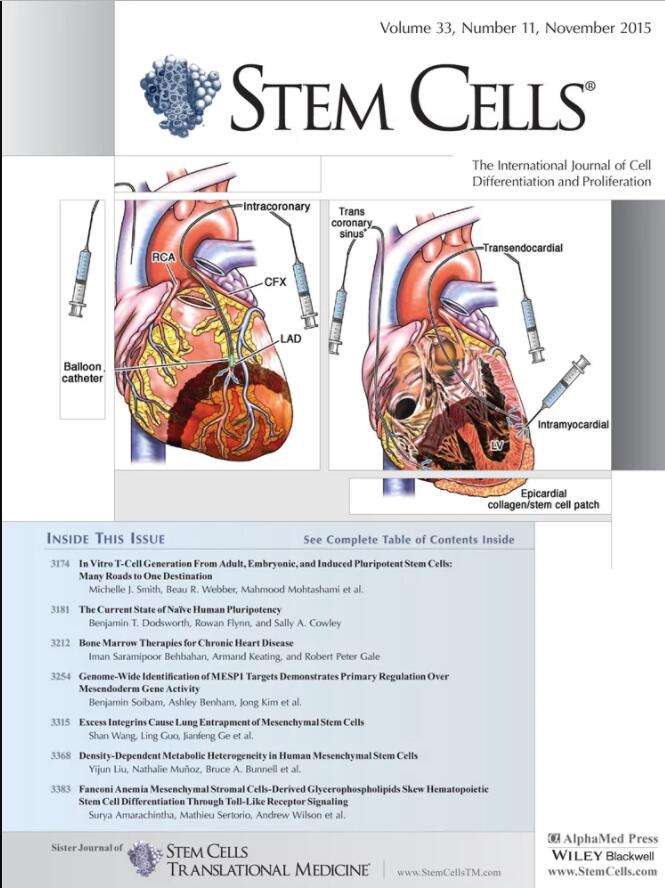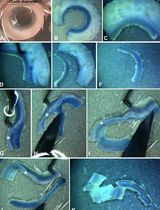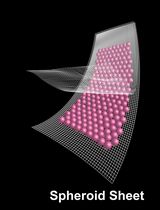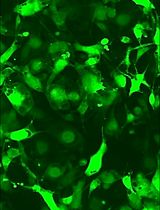- EN - English
- CN - 中文
Measurement of Mesenchymal Stem Cells Attachment to Endothelial Cells
间充质干细胞附着于内皮细胞的测定
发布: 2018年03月20日第8卷第6期 DOI: 10.21769/BioProtoc.2776 浏览次数: 8152
评审: Chao WangAnonymous reviewer(s)
Abstract
Mesenchymal stem cells (MSCs) have shown profound therapeutic potential in tissue repair and regeneration. However, recent studies indicate that MSCs are largely entrapped in lungs after intravenous delivery and die shortly. The underlying mechanisms have been poorly understood. We have provided evidence to show that excess expression and activation of integrins in culture-expanded MSCs is a critical cause of MSCs adhesion to endothelial cells of the lung microarteries resulting in the entrapment of the cells (Wang et al., 2015). Therefore, it may be meaningful to test the adhesive ability of MSCs to endothelial cells in vitro before intravenous administration to avoid their lung vascular obstructions. Here we report a simple method to measure MSCs attachment to endothelial cells.
Keywords: Mesenchymal stem cells (间充质干细胞)Background
Mesenchymal stem cells (MSCs) are emerging as an extremely promising therapeutic agent, and numerous clinical trials for a variety of diseases are underway (Salem and Thiemermann, 2010). Intravenous infusion of MSCs has been a popular delivery route for MSCs therapies in recent clinical trials because of its convenience and safety (Wu and Zhao, 2012). However, increasing evidence has indicated that MSCs cause considerable vascular obstructions following intravascular injection. Upon intravenous infusion, more than 80% of MSCs are entrapped in the lungs, and only less than 1% of MSCs are detected in the acute ischemic heart or brain (Lee et al., 2009; Toma et al., 2009).
Recent studies suggest that MSCs are largely stuck in the precapillary microvessel after intravenous administration and most of them die shortly of local ischemia (Toma et al., 2009). Therefore, it has become an increasing concern over the safety and efficacy of intravascularly administered MSCs. The mechanisms of vascular obstructions of MSCs have not been fully understood.
Our data have indicated that excess expression of integrins in MSCs is an important cause for their lung entrapment, which leads to attachment of the cells to endothelial cells in the lungs, thus reducing their trafficking and homing to inflamed tissues. Functional blockade of integrins in MSCs, especially after integrin β1 blockade, significantly decreases their attachment to endothelial cells, resulting in a substantial reduction of MSCs entrapped in the lungs, elevated levels of circulating MSCs in the blood, and increased engraftment of the cells to inflamed tissues (Wang et al., 2015). Here we provide a methodology for measuring the attachment of MSCs to endothelial cells in vitro.
Materials and Reagents
- 24-well plates (Corning, Costar®, catalog number: 3524 )
- 12-well plates (Corning, catalog number: 3512 )
- 10 cm plates (Corning, catalog number: 353003 )
- Pipette (Corning, catalog number: 4100 )
- 15- or 50-ml conical centrifuge tubes (Corning, catalog number: 430052 , 430828 )
- Human bone marrow-derived MSCs (Lonza, catalog number: PT-2501 )
- Human umbilical vein endothelial cells (HUVECs) (Lonza, catalog number: CC-2517 )
- Human lung microvascular endothelial cells (HMVECs-L) (Lonza, catalog number: CC-2527 )
- Dulbecco’s modified Eagle’s medium (DMEM) (Thermo Fisher Scientific, GibcoTM, catalog number: 41966052 )
- Fetal bovine serum (FBS) (Thermo Fisher Scientific, Gibco TM, catalog number: 10270106 )
- Penicillin-streptomycin (Thermo Fisher Scientific, GibcoTM, catalog number: 15140122 )
- EGM-2 MV SingleQuot Kit Supplements & Growth Factors (Lonza, catalog number: CC-4147 )
- EGMTM-2 MV BulletKitTM Medium (Lonza, catalog number: CC-3202 )
- Endothelial basal medium-2 (EBM-2) (Lonza, catalog number: CC-3156 )
- Fibronectin (Sigma-Aldrich, catalog number: F0556 )
- Sterile phosphate buffer saline (PBS), pH 7.2 (Thermo Fisher Scientific, GibcoTM, catalog number: 20012068 )
- Hank’s balanced salt solution (HBSS) (Thermo Fisher Scientific, GibcoTM, catalog number: 14025092 )
- Vitronectin (Sigma-Aldrich, catalog number: V8379 )
- Bovine serum albumin (BSA) (Sigma-Aldrich, catalog number: A2153 )
- Lipophilic fluorophore 1,1’-dioctadecyl-3,3,3’,3’-tetramethylindocarbocyanine perchlorate (DiI) (Sigma-Aldrich, catalog number: 468495 )
- Trypsin-EDTA (0.25%), phenol red (Thermo Fisher Scientific, GibcoTM, catalog number: 25200056 )
- Mouse anti-human integrin β1 antibody (Merck, catalog number: MAB1987 )
- Mouse anti-human integrin β1 activated antibody (Merck, catalog number: MAB2079Z )
- Anti-human integrin α5 (Merck, catalog number: MAB1956Z )
- Anti-human CD51/CD61 (integrin αVβ3) purified (Thermo Fisher Scientific, eBioscienceTM, catalog number: 14-0519 )
- Mouse isotype IgG (Sigma-Aldrich, catalog number: M6898 )
- Tumor necrosis factor-α (TNF-α) (PeproTech, catalog number: 300-01A )
- Medium 199 (Sigma-Aldrich, catalog number: M4530 )
- Paraformaldehyde (PFA) (Sigma-Aldrich, catalog number: P6148 )
- Ficoll-paque Plus solution (GE Healthcare, catalog number: 17-1440-02 )
- Dead Cell Apoptosis Kit with Annexin V Alexa FluorTM 488 & Propidium Iodide (PI) (Thermo Fisher Scientific, InvitrogenTM, catalog number: V13241 )
- Human leucocytes (see Recipes)
Equipment
- Traceable Nano Timer (Fisher Scientific, catalog number: 14-649-83 )
- Centrifuge (Eppendorf, catalog number: 5810 R )
- Hemocytometer (Hirschmann Instruments, catalog number: 8100103 )
- CO2 incubator (Panasonic, model: MCO-19AIC (UV))
- Fluorescence microscope (Leica Microsystems, catalog number: Leica DMI6000 B )
Procedure
文章信息
版权信息
© 2018 The Authors; exclusive licensee Bio-protocol LLC.
如何引用
Wang, S., Madsen, C. D. and Wu, Y. (2018). Measurement of Mesenchymal Stem Cells Attachment to Endothelial Cells. Bio-protocol 8(6): e2776. DOI: 10.21769/BioProtoc.2776.
分类
干细胞 > 成体干细胞 > 间充质干细胞
细胞生物学 > 基于细胞的分析方法 > 细胞粘附
您对这篇实验方法有问题吗?
在此处发布您的问题,我们将邀请本文作者来回答。同时,我们会将您的问题发布到Bio-protocol Exchange,以便寻求社区成员的帮助。
Share
Bluesky
X
Copy link












